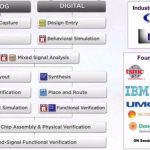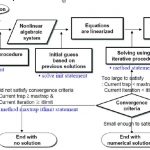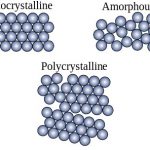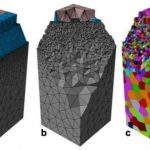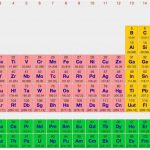High-capacity IC place and route (P&R) tools can cost $200K and more to own from the big three vendors (Cadence, Synopsys, Mentor), but what about IC designs that are primarily Big Analog and Little Digital? In the EDA world we often have multiple choices for tools, and there are affordable alternatives to place and route out… Read More
Tag: webinar
Leakage Current TCAD Calibration in a-Si TFTs
Two weeks ago I blogged about amorphous silicon and how that material is well-suited for designing TFTs. Today I’m following up after watching the archived webinarpresented by Nam-Kyun Tak of Silvaco. After clicking on that link you’ll be brought to a brief sign-up page and then can watch the archived webinar in your… Read More
NoC 101, a Sonics Webinar
One of the things that I’ve been telling the people at Sonics when they will listen is that they should do a bit more basic education on Networks on Chip (NoC). Sure, the people who actually use Sonics’s products care about deep details such as security and power management, but there is a whole host of designers who have… Read More
Getting a Quote Without Talking to a Salesman
VLSI Technology, for those of you not of a certain age, was one of the companies that, along with LSI Logic, created the ASIC business. One challenge in ASIC is that the customer needs to decide which ASIC company to use (since the libraries and technologies are all different) meaning they needed to get quotes from several companies.… Read More
Amorphous Silicon and TFTs
Most ICs are fabricated with crystalline silicon (c-Si), which is a tetrahedral structure forming a well-ordered crystal lattice. There’s another form of semiconductor material called amorphous silicon (a-Si) which has no long-range periodic order. It turns out that a-Si is a great material for the active layer in thin-film… Read More
Adding a Digital Block to an Analog Design
My engineering background includes designing at the transistor-level, so I was drawn to attend a webinar today presented by Tanner EDAand Incentia about Adding a Digital Block to an Analog Design. Many of the 30,000 users of Tanner tools have been doing AMS designs, so adding logic synthesis and static timing analysis from Incentia… Read More
Finding Logic Issues Early that Impact Physical Implementation
Complex SoC project teams typically use a divide and conquer approach where specialized engineers work in separate domains, like front-end or back-end. The five major engineering tasks for IC design can be described as: RTL design, synthesis, floor planning, place and route, then finally design analysis.
What if you could detect… Read More
Designing SmartCar ICs
When I upgraded cars from a 1988 to 1998 Acura it seemed like my car had become much smarter with a security chip in the key, security codes in the radio and a connector for computer diagnosis, however in today’s modern auto there’s a lot more mixed-signal design content. Micronasand Synopsysgot together and hosted … Read More
SiC and Si Power Devices
ICs for consumer electronics are often battery powered, which are considered low voltage designs. On the other end of the IC spectrum are high voltage devices used in many industrial applications like: automotive, aerospace, data centers, transportation and power generation. … Read More
TCAD to SPICE Simulation of Power Devices
The periodic table shows that Silicon (Si) is in a column along with other elements like Carbon (C) and Germanium (Ge). With so much emphasis on Silicon, you’d think that the other semiconductor materials have been neglected a bit.
Silicon is a wonderful material and most of our consumer electronics and handheld devices … Read More


